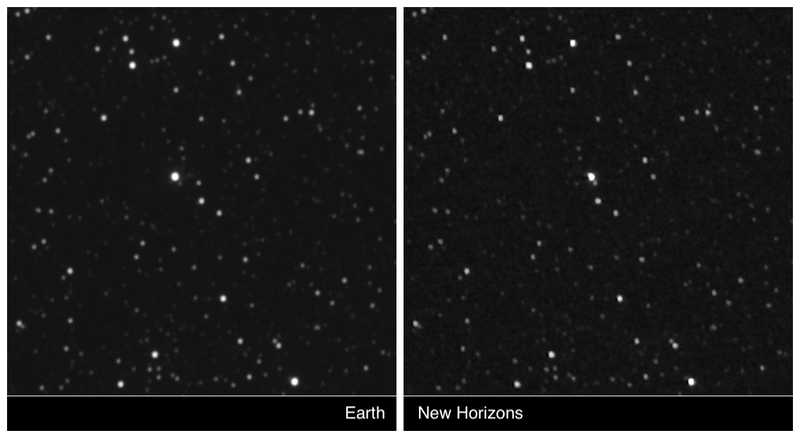Recent news from NASA described the first-ever interstellar parallax experiment, that was conducted by the New Horizons space telescope. New Horizons is now more than 4,000,000,000 miles from Earth. In April, the cameras on the spacecraft took images of the stars Proxima Centauri and Wolf 359 from its position in outer space.These images, combined with observations from ground-based telescopes, highly accurate 3D locations of the stars. This parallax experiment has the potential to aid interstellar navigation in the future.
Las Cumbres Observatory ground-based observations were critical to the parallax experiment. For the Observatory, the key part of getting these observations was to execute them simultaneously with New Horizons. This effort required very precise scheduling because the time lag between Earth and New Horizons is approximately 6.5 hours. Since LCO's telescopes are scheduled automatically by software, lining up the observations with New Horizons required a special manual override. Astronomer Dr. Edward Gomez scheduled a suite of observation requests with very short windows on the LCO global network of 0.4m telescopes that were simultaneous with the New Horizons scheduled observation time window. One of the requests overlapped exactly with the New Horizons observations and the LCO Proxima Centauri data were used in the parallax study.

The apparent shift in the position of the star Proxima Cen against further away stars, between the observations from LCO 0.4m telescope at Siding Spring Observatory, Australia and New Horizons spacecraft.
Dr. Gomez explained his participation in this exciting project, “Astronomical parallax, which is being demonstrated in this work, is one of the fundamental ways of measuring distance in the Universe. It’s amazing to have been involved in this measurement, which is the first to provide simultaneous observations between an interstellar spacecraft and ground-based observatory. The measurement is extremely accurate because the distance of New Horizons is 25x greater than you can achieve with Earth-based observations.”
More information on the experiment is provided in this article by the New Horizons project.
If you would like more information about the phenomenon being studied, astronomical parallax, please see our SpaceBook page.

